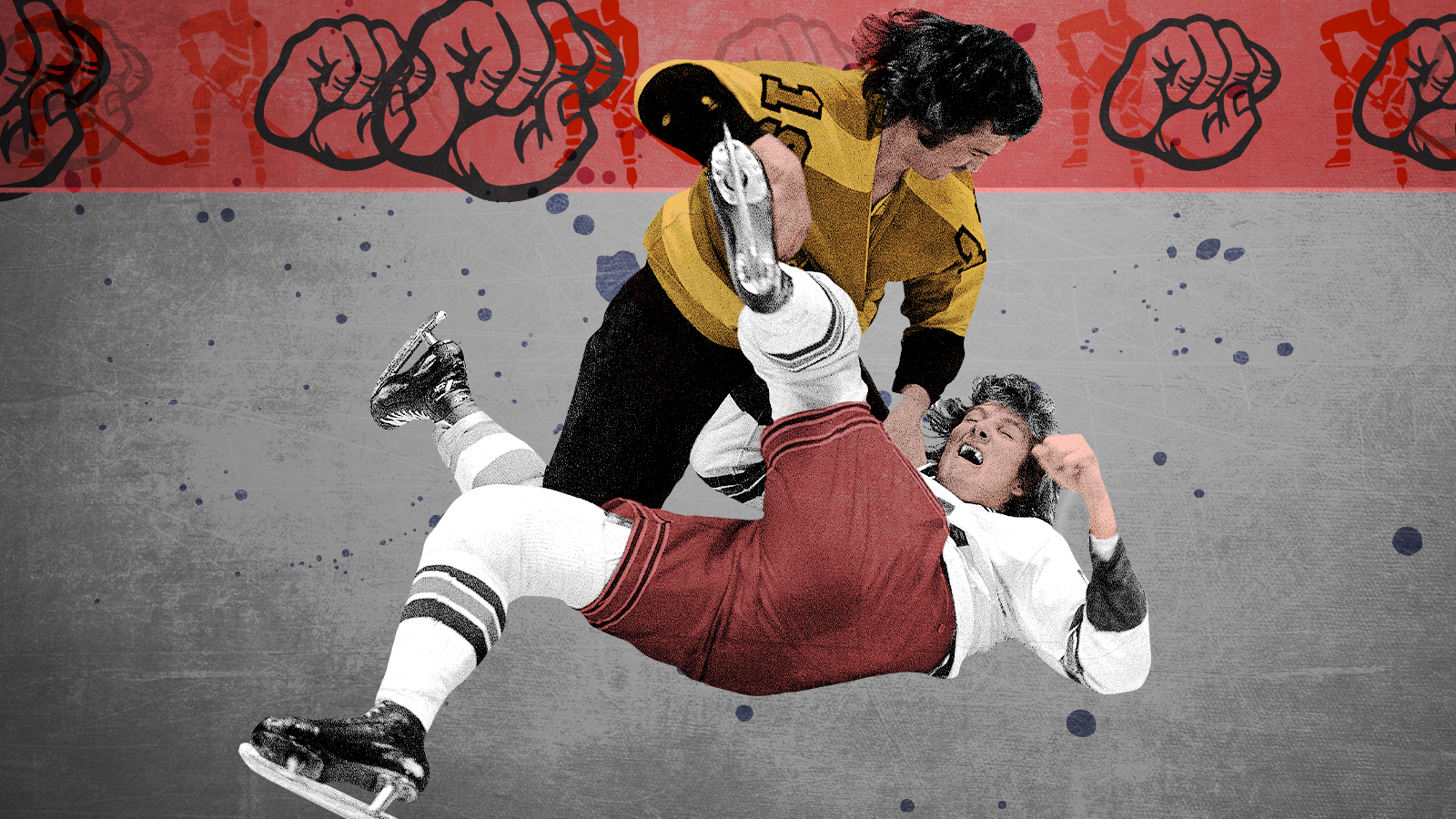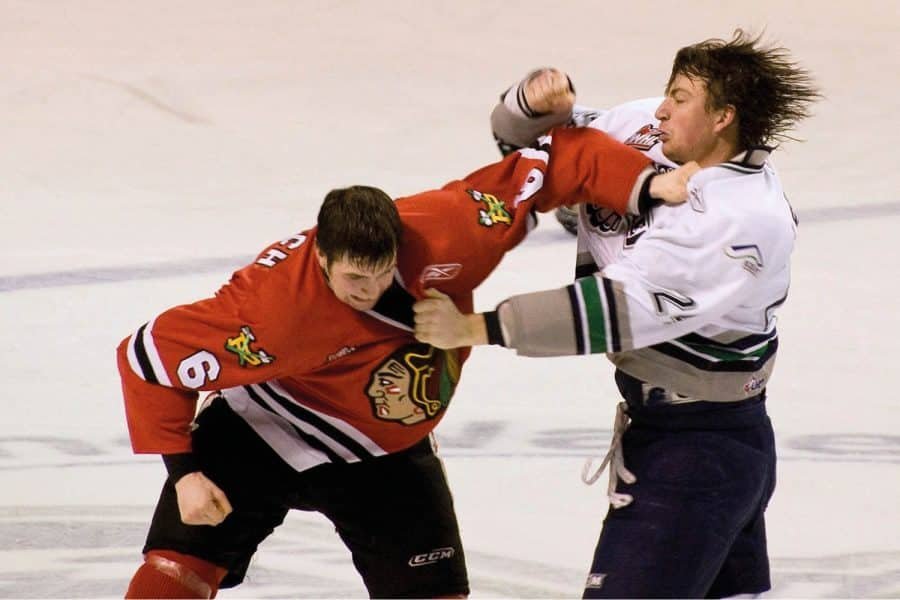Fighting in hockey is a hot topic. Opinions are divided.
Some see it as part of the game, while others see it as unnecessary violence. Hockey is a sport known for its speed, skill, and physicality. Fights often break out, leading to debates about their place in the game. Supporters argue that fighting enforces discipline and protects star players.
Critics believe it promotes unnecessary aggression and risks player safety. This blog will explore both perspectives. We’ll delve into why fighting happens, its effects on the game, and what it means for players and fans. Whether you’re a die-hard hockey fan or new to the sport, understanding this debate can enhance your appreciation of the game.
Historical Context
Hockey is a sport with a rich and dynamic history. One of its most controversial aspects is the practice of fighting during games. To understand the current debate, we need to delve into the historical context of fighting in hockey.
Origins Of Fighting In Hockey
Fighting has been part of hockey since the early days. The sport originated in Canada in the late 19th century. Back then, matches were often rough and physically demanding. Fights would break out as players defended their honor and their team.
In those early days, there were fewer rules to manage player conduct. This allowed fighting to become a common occurrence. It was seen as a way to settle disputes on the ice. Fans enjoyed the excitement and raw emotion that fights brought to the game.
Evolution Of Rules
As hockey grew in popularity, the need for rules became apparent. The National Hockey League (NHL) was formed in 1917. Over the years, the NHL introduced rules to regulate fighting.
Initially, there were no strict penalties for fighting. Players would often engage in fights without significant consequences. But as the sport evolved, safety became a concern. The league started to impose penalties to discourage excessive fighting.
| Era | Rules and Penalties |
|---|---|
| Early 1900s | No strict penalties for fighting |
| 1920s | Introduction of minor penalties for fighting |
| 1970s | Major penalties and game misconducts |
| 2000s | Stricter enforcement and heavier fines |
Today, fighting is still allowed but heavily regulated. Players face penalties and suspensions for engaging in fights. The league continues to adapt rules to ensure player safety and maintain the sport’s integrity.

Credit: theweek.com
Arguments For Allowing Fighting
Allowing fighting in hockey can enhance team spirit and provide a way to settle disputes on the ice. It also acts as a deterrent against dirty plays, maintaining player safety.
Tradition And Culture
Hockey has a long history of allowing fighting, deeply embedded in its tradition and culture.
For many fans, fights are seen as part of the game’s essence, adding excitement and intensity.
They view it as a way for players to defend their teammates and uphold team honor.
Player Safety And Accountability
Allowing fighting can actually enhance player safety by acting as a deterrent for cheap shots.
It holds players accountable for their actions on the ice, knowing they may have to answer physically.
This form of self-policing can prevent more dangerous plays and reduce overall on-ice violence.
Arguments Against Fighting
Fighting in hockey has been a topic of heated debate. Many argue against it for several compelling reasons. These reasons include health risks and the influence on young players. Understanding these arguments helps in forming a well-rounded opinion.
Health Risks And Injuries
Fighting in hockey leads to serious health risks. Players can suffer from concussions. These concussions can have long-term effects. Brain injuries are also common. These injuries can affect a player’s life outside of hockey.
Broken bones are another concern. During fights, players often break their hands and faces. These injuries require surgery. Recovery times are long and painful. This impacts the player’s career.
Let’s look at some data on injuries:
| Injury Type | Percentage |
|---|---|
| Concussions | 40% |
| Fractures | 35% |
| Other | 25% |
Impact On Youth Players
Young players look up to professionals. They mimic their actions on the ice. When they see fights, they think it is normal. This can lead to more fights in youth hockey. This is dangerous for growing bodies.
Parents worry about their children. They want them to learn skills, not fighting. Coaches also struggle. They try to teach respect and sportsmanship. Fighting sends the wrong message.
- Promotes violence
- Increases injury risk
- Undermines sportsmanship
These points show the negative impact on young players. It is important to consider the future of the sport.
Current Regulations
In hockey, fighting has been a controversial topic. Current regulations vary between different leagues. These rules aim to control the violence and ensure player safety. Let’s look at the rules set by the NHL and international standards.
Nhl Rules And Penalties
The National Hockey League (NHL) has specific rules for fighting. Here, fighting is allowed but comes with penalties. The players involved in a fight receive a five-minute major penalty. This means they spend five minutes in the penalty box.
Sometimes, additional penalties apply. For example, if a player leaves the bench to join a fight. They might face game misconduct or suspension. The NHL has strict guidelines to prevent injuries and maintain order.
International Standards
International hockey follows different rules. The International Ice Hockey Federation (IIHF) has a zero-tolerance policy on fighting. Players who fight in international games face severe consequences. They receive an automatic game misconduct penalty. This means they are ejected from the game.
Further, they might face suspensions for future games. The IIHF believes in promoting a clean and safe sport. They enforce strict rules to deter fighting and ensure fair play.
| League | Fighting Penalty | Additional Penalties |
|---|---|---|
| NHL | Five-minute major | Game misconduct, suspension |
| IIHF | Game misconduct | Possible suspension |
Future Of Fighting In Hockey
The future of fighting in hockey remains a hot topic. While some fans see it as an integral part of the game, others argue for its removal. The debate continues as the sport evolves and safety concerns grow.
Potential Rule Changes
New rules may limit or ban fighting in hockey. Officials discuss stricter penalties for fights. Increased suspensions could deter players from engaging in brawls. Safety is a top priority. Rule changes aim to protect players from injuries. Enforcing these rules will be challenging but necessary.
Opinions Of Stakeholders
Players, coaches, and fans have strong opinions. Some players see fighting as a way to defend teammates. Coaches worry about the impact on team dynamics. Fans are divided. Some love the excitement of fights. Others fear for the players’ well-being. League officials must consider all viewpoints.
Balancing tradition and safety is key. The future of fighting in hockey will depend on finding this balance. Engaging with stakeholders is essential to make informed decisions.

Credit: www.britannica.com

Credit: www.sfchronicle.com
Frequently Asked Questions
Is Fighting Allowed In Hockey Games?
Yes, fighting is allowed in hockey but comes with penalties.
Why Do Players Fight In Hockey?
Players fight to defend teammates, change game momentum, or settle personal scores.
What Are The Penalties For Fighting In Hockey?
Players receive a five-minute major penalty for fighting.
Does Fighting Make Hockey More Dangerous?
Yes, fighting increases the risk of injuries and concussions.
Do All Hockey Leagues Allow Fighting?
No, some leagues, like European leagues, have stricter rules against fighting.
How Does Fighting Affect Team Dynamics?
Fighting can boost team morale but also lead to suspensions.
Are There Any Benefits To Fighting In Hockey?
Some argue it can protect star players and maintain order on the ice.
Can Fighting Be Banned From Hockey?
Yes, leagues can change rules to ban fighting, but it remains controversial.
What Do Fans Think About Fighting In Hockey?
Opinions are mixed; some enjoy the excitement, while others worry about safety.
Conclusion
Hockey’s fighting debate remains a hot topic. It brings excitement to fans. But safety is crucial. Players risk injury during fights. There are pros and cons. Some argue it keeps the game fair. Others say it’s unnecessary violence. Rules can change to balance both views.
Safety and enjoyment must be priorities. The sport can evolve while respecting tradition. Fans and players both shape hockey’s future. Let’s keep the game thrilling and safe.




